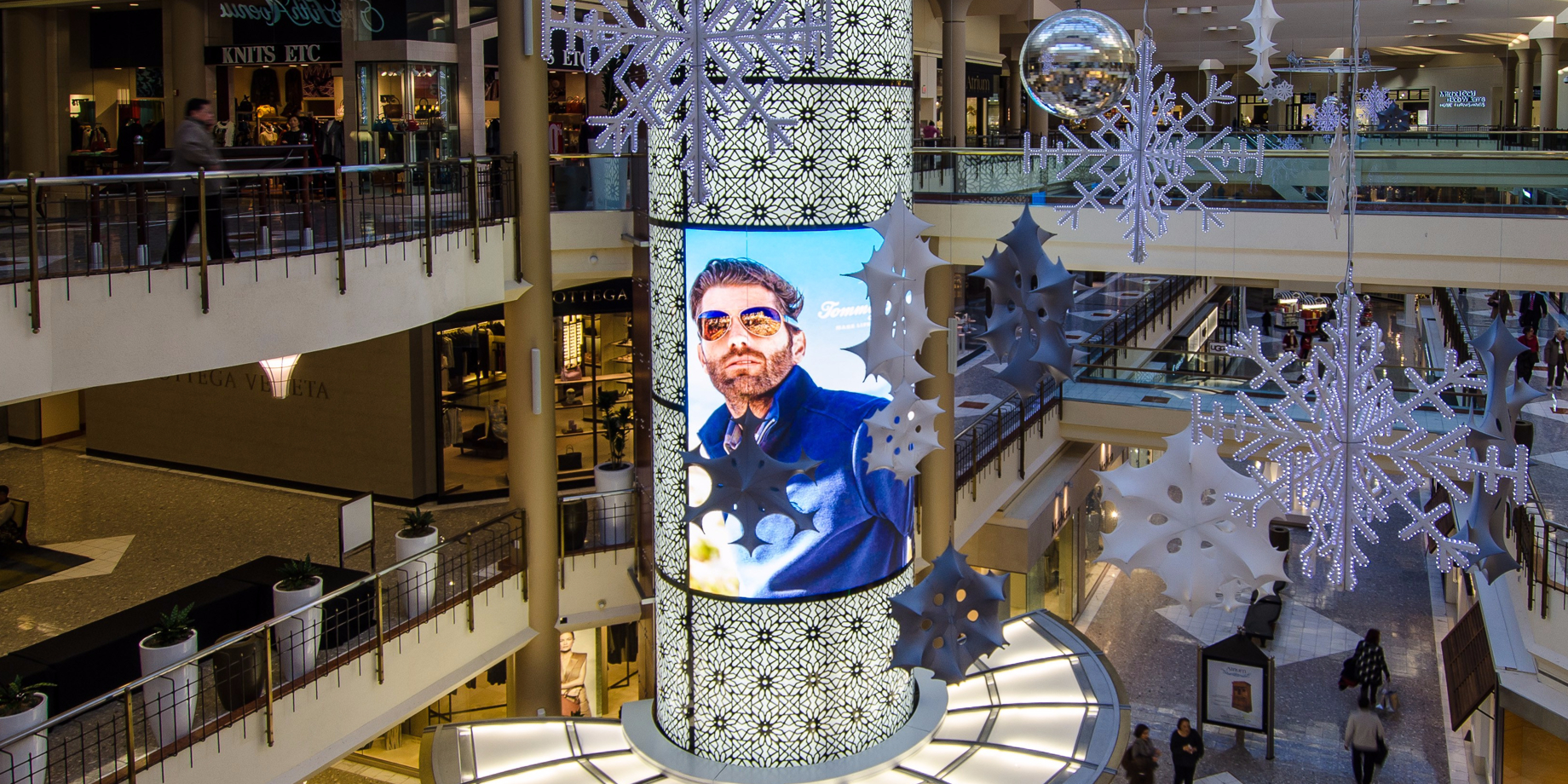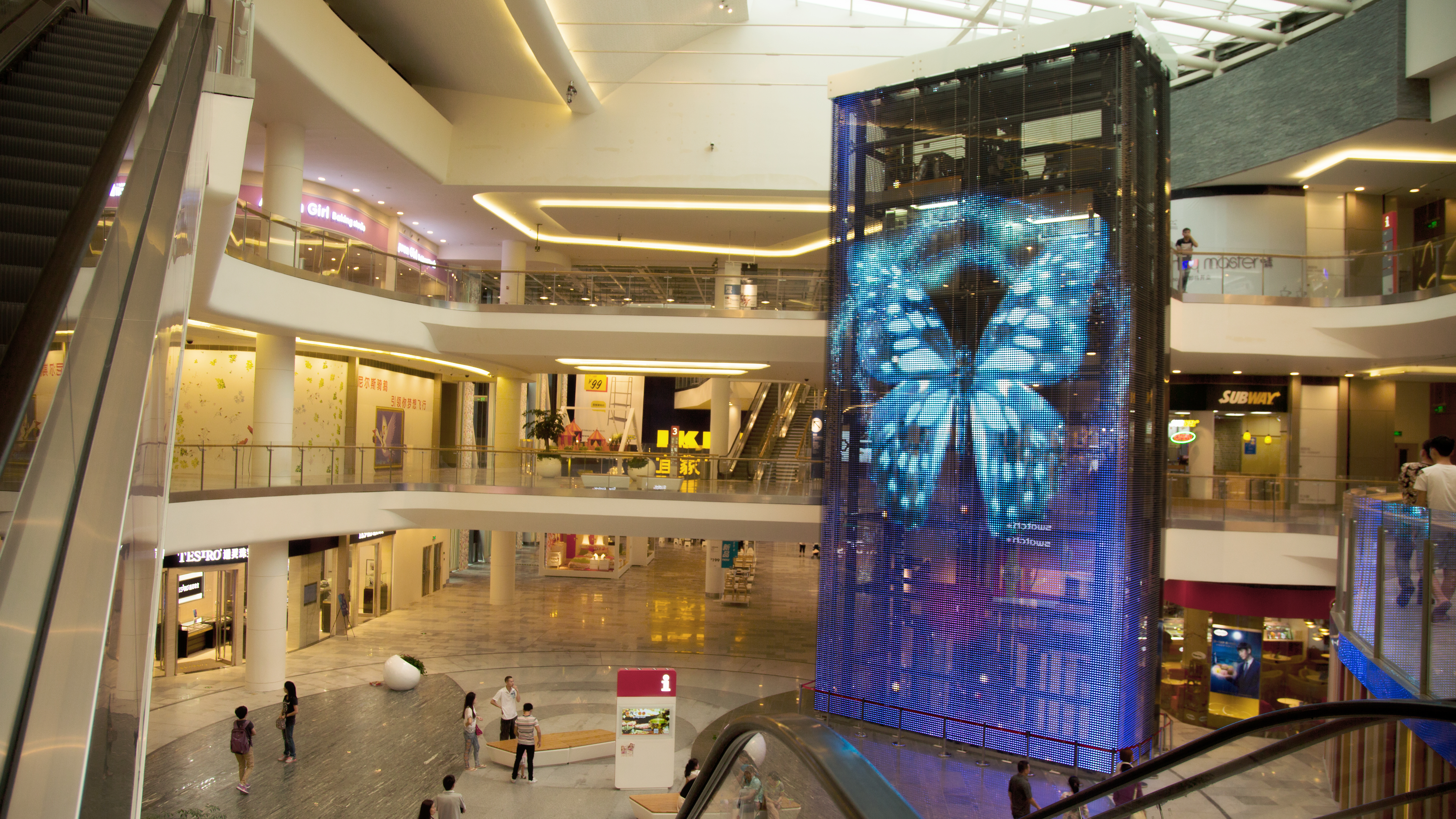The Future of Mall Media – Part 2
Hello again! We’re back for part two of “The Future of Mall Media” – let’s hope it’s just as thrilling as the last 10 minutes of the 2017 Oscars. Pop culture aside, in the previous post we discussed how the majority of shopping and retail developers are embracing the growing omni-channel marketing trend. As part […]
Tyler Campbell on 3/6/2017
Categories: Out of Home Advertising

Hello again! We’re back for part two of “The Future of Mall Media” – let’s hope it’s just as thrilling as the last 10 minutes of the 2017 Oscars. Pop culture aside, in the previous post we discussed how the majority of shopping and retail developers are embracing the growing omni-channel marketing trend. As part of the evolving retail landscape, shopping centers are mixing up their marketing efforts to compete with online sales and minimize the impact on in-store business. How are they doing this? One way is creating in-store digital experiences.
Digital screens in retail takes on many forms. Creative mixtures of LED and LCD technology are appearing more and more in open areas such as atrium’s, food courts and greenspaces. You can find screens:
- curving up walls
- animating street furniture
- wrapping inside domes
- installed along structures
- rotating above center courts
- climbing up elevators
- hanging in front of windows
- attached to interactive kiosks and on in-store digital screens
The technology is even helping turn building façades and elevators into dynamic communication mediums without concealing the architecture beneath.

Inter IKEA Transparent LED Elevator – Wuxi, China
How and why is all of this happening? Video technology evolves quickly, getting brighter and better with each passing year. As the demand for the technology within in the retail space increases, so does the competition between shopping centers. Several years ago, a handful of industry-leading shopping developers began rolling out their own digital LED video solutions, others took notice and followed suit. In addition, as costs become more affordable, display manufacturers are producing evolving products that are lighter, thinner, brighter, and use less power than their predecessors. Many are designing dynamic digital signage products specifically with the retail market’s needs in mind.
One trend is the growth of large-format hanging, indoor LED video displays. Several solutions have developed over the past 7+ years and steadily became the market standard for multiple digital mall networks. Some hoist, hang and rotate above mall center courts, while others are stationary and appear along corridors or open wall space.
Their unique features allow them to act as a backdrop for fashion shows, live in-mall concerts, live TV broadcasts, video gaming competitions or, as of late, tie-in to interactive or social media providing coupons, discounts and more.
Digital is also increasing its presence outside shopping mall walls. Whether it’s an LED billboard marquee, large-format LED video in retail greenspaces, digital way-finding signage, or designed into the outer architecture, LEDs are creatively used throughout retail environments. The industry is embracing digital signage’s power and flexibility and those that are reaching for the cutting edge are realizing the highest benefit.
Whether you’re considering digital for indoor or outdoor, one big decision is choosing your technology. Many retailers begin weighing which option: LED or LCD technology, best fits their application and objectives.
LED vs. LCD
When assessing technology, it’s essential that retail marketers educate themselves on key feature differences between LED and LCD screens. Both are viable solutions – the key is identifying which solution best fits your location and objectives. Depending on the application and audience viewing distance, one is usually a better choice over the other.
Generally, LED displays are 3 to 5 times brighter than LCD screens for equal or less power consumption. So if your application is within an environment where ambient light or sunlight is frequent, an LCD screen may not be the ideal choice as they can appear washed out. The vast majority of LED displays are designed to last more than 100,000 hours. That’s 3 to 4 times longer than a typical LCD, offering a better return on investment. But if a retailer plans to update technology relatively often, a display’s prime operational lifetime may not hold much weight in the decision-making process. In demanding bright outdoor environments, LCD technology can experience a shorter lifetime and may be hard to view when faced with direct sunlight. However, LCD screens are relatively inexpensive to purchase which contributes to their success. In addition, quality LCD screens emit an incredibly sharp image, are flat and very thin.
Depending on your goals and where your digital displays will live and operate, there are plenty of factors to evaluate when choosing the appropriate retail digital signage solution. Once you make it, the next step is developing a content strategy that fits you and your business model. In the next post, we’ll discuss the importance of content strategy and how it relates to getting the most out of your digital investment. Stay tuned!










